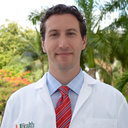The role of polyamine metabolism in neuronal injury following cerebral ischemia.
Ключови думи
Резюме
Stroke is a leading cause of morbidity and mortality in the US, with secondary damage following the initial insult contributing significantly to overall poor outcome. Prior investigations have shown that the metabolism of certain polyamines such as spermine, spermidine, and putrescine are elevated in ischemic parenchyma, resulting in an increase in their metabolite concentration. Polyamine metabolites tend to be cytotoxic, leading to neuronal injury in the penumbra following stroke and expansion of the area of infarcted tissue. Although the precise mechanism is unclear, the presence of reactive aldehydes produced through polyamine metabolism, such as 3-aminopropanal and acrolein, have been shown to correlate with the incidence of cerebral vasospasm, disruption of oxidative metabolism and mitochondrial functioning, and disturbance of cellular calcium ion channels. Regulation of the polyamine metabolic pathway, therefore, may have the potential to limit injury following cerebral ischemia. To this end, we review this pathway in detail with an emphasis on clinical applicability.


